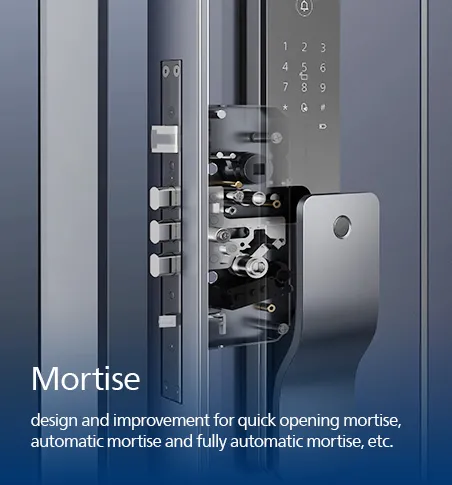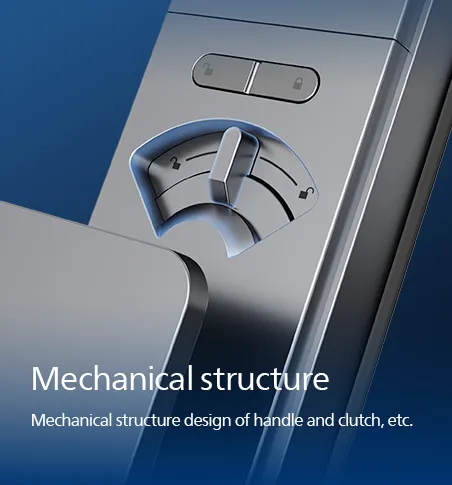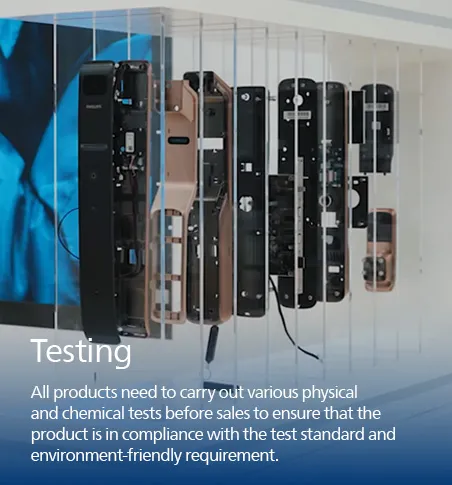Key Technologies
Palm Vein Recognition
Face Recognition
Fingerprint Sensor
Key Tag
Handle
Mortise
Lock Cylinder
Power Supply
Palm Vein Recognition
Philips smart door locks is equipped with advanced palm vein recognition technology, delivering a high level of security through live biometric identification. By using near-infrared light to scan the palm, the system captures unique subcutaneous vein patterns—something that is nearly impossible to forge or duplicate.
The recognition process is fully contactless and takes less than 0.7 seconds, offering a hygienic, frictionless experience. It remains highly accurate even in complex lighting conditions or with surface-level hand injuries, moisture, or dirt. With a recognition accuracy of over 98% and a wide age coverage (from age 3 to 80+), this technology ensures stable and reliable performance across diverse user groups.

Face Recognition
Philips smart door locks feature cutting-edge 3D binocular recognition technology, leveraging dual-camera stereo imaging to capture depth information—just like the human eye. By analyzing images from two cameras through sophisticated matching algorithms, the system builds an accurate 3D model of the user’s facial features.
Unlike traditional 2D recognition, this approach eliminates blind spots and significantly enhances security. It resists spoofing attempts from photos or videos and performs reliably under complex lighting or background conditions. The result: a faster, safer, and more adaptable unlocking experience—built for true hands-free, unattended operation.

Fingerprint Sensor
Philips smart locks adopt semiconductor fingerprint sensors, which use biometric identification technology for fingerprint recognition, and are uniformly processed and produced by the supplier OFILM to achieve guarantee of both technology and quality.

Key Tag
Philips smart door locks adopt the CPU key tags, also known as smart cards. The integrated circuit in the card contains a microprocessor CPU, a storage unit (including Random Access Memory RAM, Read-only memory ROM (FLASH), Electrically Erasable Programmable Read-Only Memory EEPROM) and chip operating system COS. The CPU card equipped with COS is equivalent to a microcomputer, which not only has the function of data storage, but also has functions such as command processing and data security protection, so that its technical indicators and security levels are much higher than the common M1 cards on the market*.
Every time the card is used, the encrypted key in the card will be replaced once to prevent the card from being copied, making it much securer than other cards on the market.
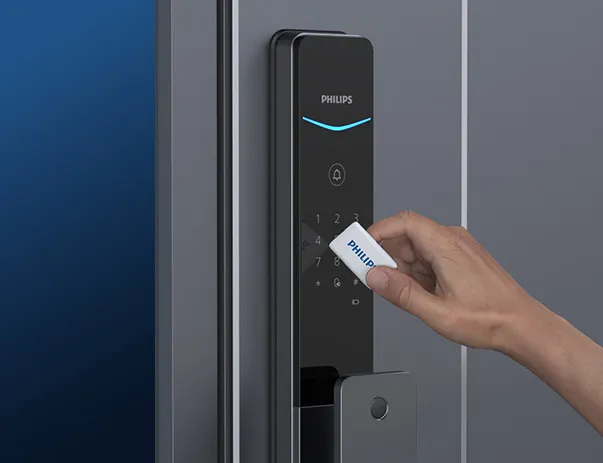
Handle
Patented double plane bearing provides stable and flexible operation.
Fasten with four screws, firmer and reliable.
The structural parts are made of stainless steel precision castings, which are hard and durable.
Working with mortise to make easy adjustment for the door swing in different directions.
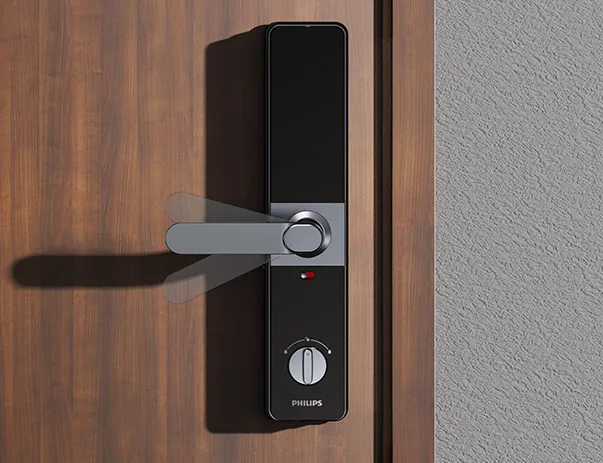
Mortise
Fully automatic mortises are adopted by most of Philips push-pull door locks while automatic mortises or quick opening mortises are widely used in Philips lever door locks.
Among them, the fully automatic mortise adopts the integrated design of motor-driven and mortise structure. The mortise has low transmission loss, low fall-off rate (<RMA0.1%), low maintenance cost, low power consumption and low noise.
(1) The motor clutch structure adopts metal gear box.
(2) The main latch bolt of the mortise is an integrated stainless steel cold-pressed structure, and the upper and lower latch bolts are designed with anti-saw rings.
(3) It provides given space for small holes to limit the position in the square shaft hole, which offers easy installation.
(4) Assistant bolt is used to detect the opening and closing of the door. An alert will be triggered when the door is left ajar.

Lock Cylinder
Philips smart door lock adopts a hidden lock cylinder, the mortise and the latch bolts of the lock cylinder are controlled by the transmission device. With the keyhole located at the bottom of the escutcheon, facing down and close to the door surface, makes it hard to be found and broken with tools, thus forming the resistance to the suspicious. The whole digital door lock meets the requirements of Class B* safety standards, and the lock cylinder meets the requirements of Class C safety standards.

Power Supply
Philips smart door lock is powered by 4 AA batteries. To reduce the need for frequent replacement of the batteries, you can install 8 batteries in total.
Besides, you can also power up the lock by plugging a 5V power bank into the micro USB port when the battery level is low during emergency cases, which is convenient.
Using the upgraded encrypted special lithium batteries, not only avoids the risk of mixed batteries(when unofficial encrypted lithium batteries are put in, the lock will sound an alarm), but also has the advantages of good discharge effect, high safety performance, long battery life, etc. It also supports cyclic charging to ensure the durable and stable endurance of the digital lock.














